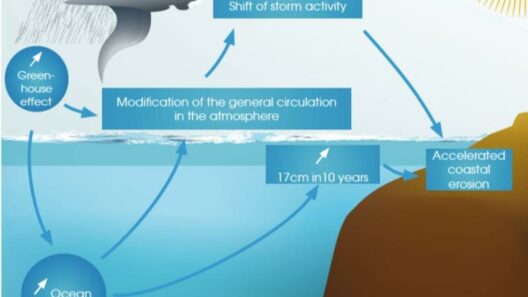The climate of Mexico is a mosaic of diverse regions and conditions, each characterized by its unique vegetation, fauna, and weather patterns. This geographical variety creates an extraordinary array of ecosystems across the country, ranging from arid deserts to lush rainforests. Understanding these climate zones not only enhances one’s knowledge of the environment but also encourages a greater appreciation for Mexico’s rich natural heritage.
At the outset, it is essential to recognize that Mexico is home to multiple climate zones, primarily influenced by its topography, latitude, and proximity to the ocean. The northern parts of Mexico are predominantly defined by its semi-arid and arid desert conditions, while the southern regions experience a tropical climate. The country’s diverse altitude—from sea level along the coasts to towering peaks in the interior—further contributes to the variety of climates observed across different regions.
Commencing with the *desert climate zones*, one encounters expansive landscapes dotted with cacti, sparse vegetation, and vast a tracts of sand. The *Chihuahuan Desert*, the largest desert in North America, stretches across northern Mexico and even into the southwestern United States. This region exemplifies the arid environment, where rainfall averages only about 25 centimeters (10 inches) annually. Species such as the Yucca plant and various succulents thrive here, showcasing the tenacity of life in extreme conditions.
Transitioning southward, the characteristic *semi-arid climate* becomes more prominent. This climate zone, found in the central and northwest regions of the country, experiences slightly more rainfall, averaging between 25 and 75 centimeters (10-30 inches) annually. The vegetation is typically characterized by grasslands interspersed with shrubs and low trees. This region supports agriculture, particularly in areas where irrigation is available, showcasing a resilient adaptation to the climate.
As one moves further south, the climate begins to shift into a *tropical savanna climate*. This zone is characterized by distinct wet and dry seasons. The summer months bring torrential downpours, with considerable rainfall that revitalizes the land, encouraging a burst of greenery. The abundant rain promotes biodiversity, supporting a variety of plant species and wildlife. This climate zone is particularly notable in the southeastern states such as Chiapas and Tabasco, where the lush surroundings harbor rich ecosystems teeming with life.
Next, one encounters the *tropical rainforest climate*, a hallmark of the southernmost regions of Mexico. The *Selva Lacandona* in Chiapas represents one of the largest areas of tropical rainforest in North America. This region is characterized by year-round high temperatures and nearly constant rainfall, often exceeding 200 centimeters (80 inches) annually. Such conditions foster an unparalleled level of biodiversity, making this rainforest a critical area for conservation efforts. The rich undergrowth and towering canopy provide habitats for countless species, including endangered ones like the jaguar and the howler monkey.
As a counterpoint to the wet ecosystems, the *highland climate zones* present a stark contrast. The temperate climate experienced in the mountainous regions, including parts of the Sierra Madre Occidental and Sierra Madre Oriental, offers cooler temperatures and more regular rainfall. The elevation influences the climatic conditions significantly, resulting in a temperate ecosystem that supports agriculture, particularly the growth of coffee, fruits, and various other crops. The interplay between altitude and climate leads to the phenomenon known as microclimates—localized weather conditions that differ from the surrounding area, often in a dramatic manner.
Moreover, the harmony of the various climate zones in Mexico underscores their interdependence. The ecological balance between the arid deserts and the tropical forests is delicate. Changes in climate, whether due to natural phenomena or human activities, can have profound implications for these ecosystems. Deforestation in the rainforest, for example, can lead to alterations in rainfall patterns, which may, in turn, affect agricultural productivity in semi-arid regions.
From a broader perspective, understanding these climate zones imparts valuable knowledge about climate change and its often underestimated local impacts. The shifting climate patterns posed by global warming threaten the sustainability of these unique ecosystems. Species that are adapted to specific environmental conditions face increased stress as their habitats change faster than their ability to adapt. This underscores the vital necessity for conservation efforts—an acknowledgment that the future of these diverse climates hinges on responsible stewardship.
In conclusion, the climate zones of Mexico are not merely geographical distinctions; they are dynamic systems rich in biodiversity that require comprehensive understanding and active conservation efforts. This diverse tapestry of climates from deserts to rainforests beckons for further exploration and deeper comprehension. By recognizing the intricate relationships among species and their environments, one can foster a sense of responsibility and inspire action in the face of climate change and environmental degradation. This understanding tantalizingly shifts one’s perspective, inviting a profound appreciation for the remarkable natural world that flourishes within Mexico’s varied climates.



